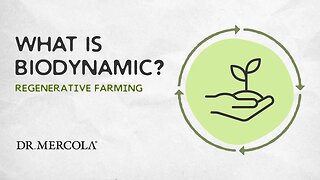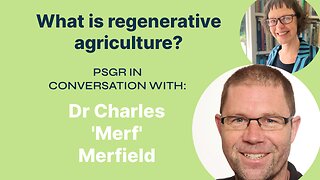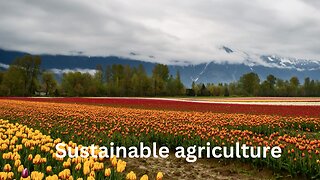Natural option: Organic, natural farming is not only profitable & sustainable but also productive
CSE recently consolidated long-term evidence on holistic benefits of organic and natural farming; here’s what we found
It’s hard to fathom that just 3.8 million hectares (ha) — 2.7 per cent of the country’s net-sown area — are under organic and natural farming despite two decades of government efforts to upscale the practices.
The Union government passed its first policy on organic farming in 2005 and introduced the flagship Paramparagat Krishi Vikas Yojana (PKVY) in 2015-16. Recently in December 2021, highlighting the ill-effects of chemical-based farming, Prime Minister Narendra Modi also appealed to make natural farming a mass movement in the country.
Some of the prime reasons that hinder the shift is a lack of conviction among policymakers; the limited consensus among the scientific community in favour of organic and natural farming; and the tendency to evaluate non-chemical agricultural practices only on the basis of yield.
The Centre for Science and Environment (CSE), a Delhi-based non-profit, has recently consolidated long-term evidence on the holistic benefits of organic and natural farming.
It analysed the results of 89 scientific studies, conducted across the country over the last decade, and the findings of the government’s own All India Network Project on Organic Farming (AI-NPOF) going on in 16 states since 2004.
CSE researchers analysed these key aspects: Crop yield, cost of cultivation, income and livelihood, soil health and environment, and food quality.
In the report, Evidence (2004-20) on Holistic Benefits of Organic and Natural Farming in India, they state that organic and natural farming is not only profitable and sustainable but also productive when compared with the chemical-dependent in organic farming.
On yield
Long-term trends of crop yield from the AI-NPOF experiment show that the organic approach is better than inorganic and is at par with integrated (a mix of organic and inorganic) methods.
Of the 504 times yield results recorded during 2014-19, some 41 per cent of the times yields were highest with the organic approach, followed by 33 per cent with integrated.
For vegetables, oilseeds and cereals, the yield with the organic approach was better than integrated and inorganic. In pulses and spices, yield with an integrated approach was higher than with an organic or inorganic approach.
Evidence collated by CSE from other scientific studies further adds to this evidence. These studies have found that in crops such as spinach, baby corn, broccoli, potato, lady’s finger, tomato, onion, chilli, pigeon pea, cowpea, black gram, rice, ragi, pearl millet, wheat and banana, yields can be higher with organic and natural farming in comparison to inorganic.
In the case of natural farming, crops like maize, groundnut, sugarcane, finger millet, soybean, jawar (sorghum) and turmeric also show higher yields.
The studies highlight the importance of organic and bio-inputs like farmyard manure, vermicompost, poultry manure, green manure, liquid bio-fertilisers, Jeevamrutha, Beejamritha, Ghanajeevamritha, Panchagavya and fish-protein hydrolysate.
Some also find a positive role played by seed soaking with liquid manure, mulching and intercropping in organic farming. After switching to organic practices, crops such as wheat, maize, rice, cluster bean, sesame, cumin and psyllium husk take a few years to produce a comparable or more yield than inorganic, while crops like potato take a year, the findings show.
About us https://bit.ly/3GUPFOa
Contact us +919942258153 kvk.subadhra@gmail.com
https://www.digistore24.com/redir/427920/CHUS87/
-
 1:00
1:00
MercolaMarket
1 year ago $0.02 earnedWhat is Biodynamic? | Regenerative Farming
140 -
 1:06:56
1:06:56
Physicians and Scientists for Global Responsibility New Zealand Charitable Trust.
4 months agoAgriculture & farming: Regenerative, agroecology, organic - how does it all fit together?
19 -
 8:59
8:59
TheRealTruthAboutHealth
1 year agoWhy Should We Buy Only Certified Organic Crops?
115 -
 8:08
8:08
EcoDrive Tech
2 months agoVertical Farming: The Future of Food is UP!
8 -
 0:49
0:49
TimbosFoodBox
1 year agoControlled Environment Agriculture at Agridime: The Future of Fresh Produce
4 -
 8:02
8:02
Frosty Garden
11 months agoHow We Fixed Square Foot Gardening And Grow More Food, Intensively!
64 -
 2:09
2:09
Planet Earth
2 months agoWhat is Sustainable Agriculture?
28 -
 22:15
22:15
1AESidneyAndBard
1 year agoA Bountiful Harvest: The Self-Sufficient Backyard for Organic Living
6 -
 1:41
1:41
SWNS
1 year ago4 in 10 couldn’t imagine not being able to buy staple fruits and veggies in their local store
58 -
 1:46
1:46
itsallaboutthebiology
4 months agoUsing Organic VS Chemical Fertilizers With The Harvest Harmonic System
44